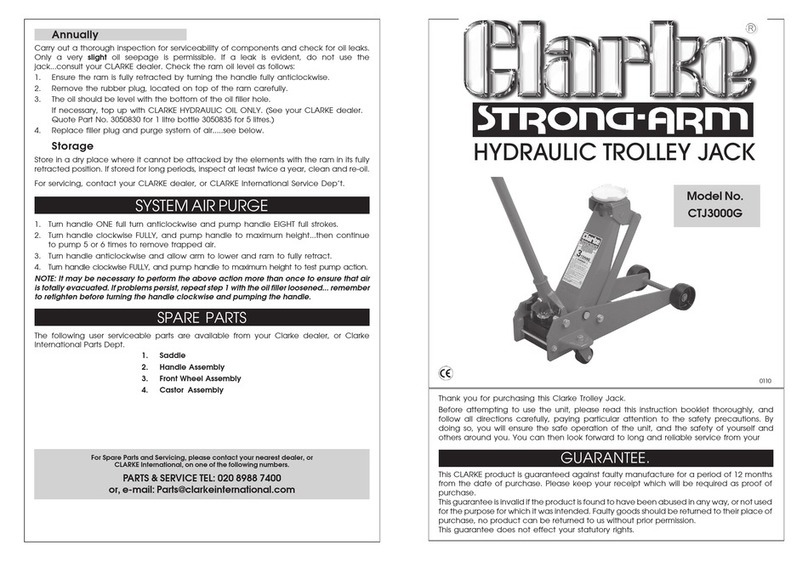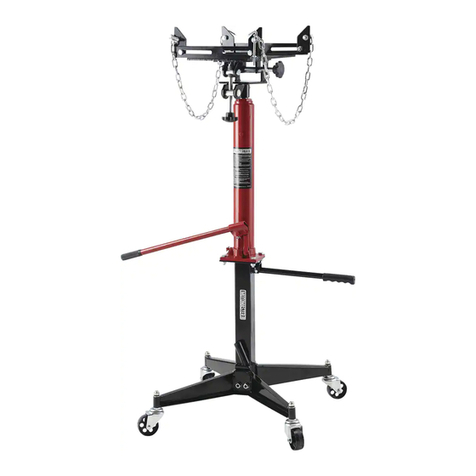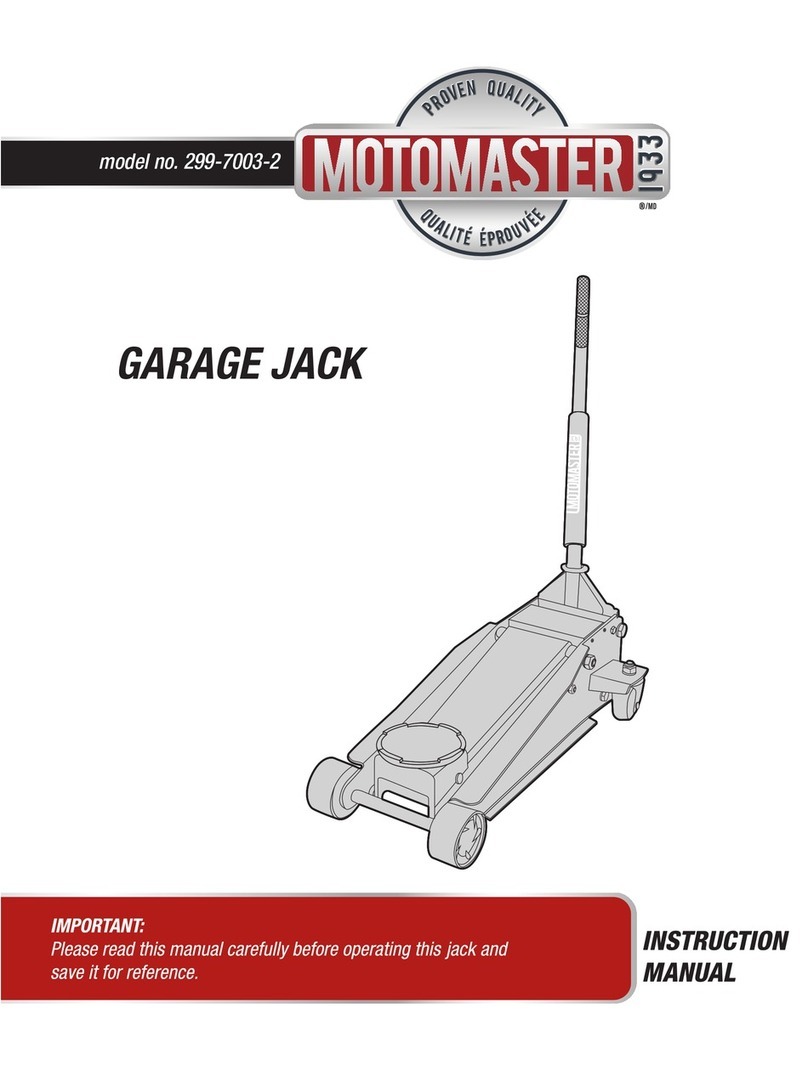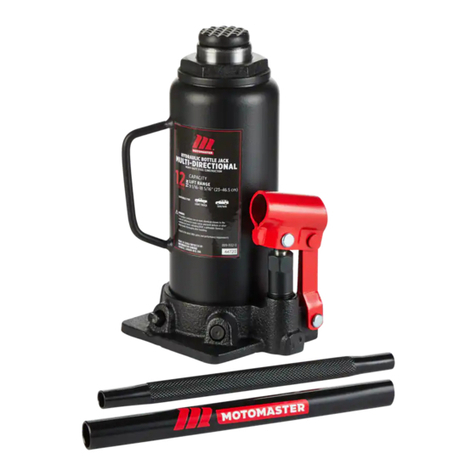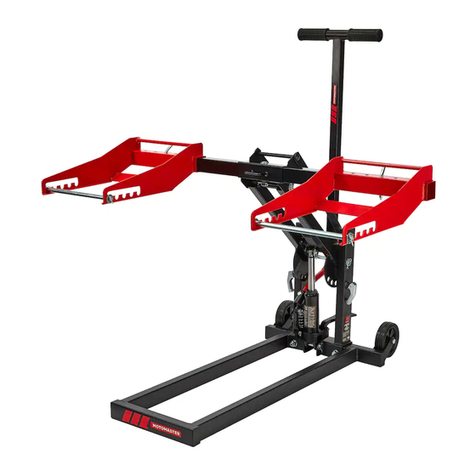
. 009-0037-6 1-888-942-6686
009-1011-0
OPERATION
OPERATION
• Verify that the vehicle’s weight is not more than the weight capacity for this jack.
• Check to make sure the jack is fully lowered. If not, insert the lower portion of the
handle into the release valve and turn the handle counter-clockwise to lower the
jack. Once the jack is fully lowered, turn the handle rmly clockwise to close the
release valve.
• Adjust the extension screw (13.1) as needed to position it directly underneath
the lifting point. Turn it counter-clockwise to raise, or clockwise to lower.
• Lifting using pressurized air power:
a. Connect the air supply hose (40). The lock lever (41) should be in the OFF
(not locked) position.
b. Connect the air compressor (compressor not included, must supply at least
7 CFM at 100-120 PSI) to the air supply hose.
c. Turn the compressor on and allow it to pressurize, if not already pressurized.
d. Press the lever (42) to the ON position and lock it into place using the lock lever
(41). This will provide a continuous air supply to the air motor (39), raising the
jack.
e. Position the jack on a solid level surface that can withstand the weight of the jack
and the load which will be lifted.
f. Be sure the load is balanced on the jack. Sturdy jack stands (not included)
positioned under the weight provide a good safety precaution against the possibility
of the load topping.
g. Be sure that the jack is positioned at a proper lift point on the item to be lifted.
Using appropriate lift points avoids possible damage to the item. Rotate the screw
extension (13.1) on the ram (13) until it contacts the underside of the load to be lifted.
Screwing counter-clockwise raises the extension, screwing clockwise lowers the
extension.
• Lifting manually:
To manually operate the jack without using compressed air, close the release valve,
then insert the end of the jack handle (54) into the handle bracket (31) and pump up
and down. This action will raise the jack.
• Support the load using jack stands (not included) or other means to support the weight.
Do not leave the load on the jack for an extended period of time. Damage to the jack or
property or personal injury may result.
WARNING!
Make sure the vehicle is parked on a at, level, solid surface. Turn off the vehicle’s engine.
Place the vehicle’s transmission in “PARK” (if automatic) or in rst gear (if manual). Set the
vehicle’s emergency brake. Then, chock the wheels that are not being lifted.
10


